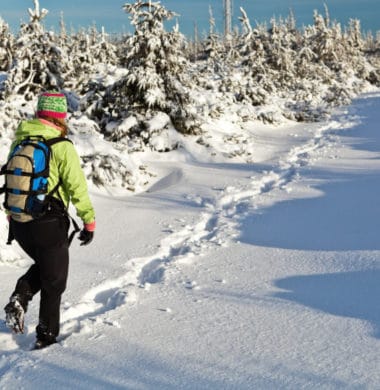Denver Cardiologists Reminds You to Keep Warm When Exercising Outside

As the classic song goes, “Baby, it’s cold outside.”, and that means taking precautions against the impeding frigid weather. Even so, it can be frustrating to resort to a treadmill during the winter months to get your cardiovascular workout in. Fortunately, the Denver cardiologists at South Denver Cardiology have the solution. For a happy, healthy heart, according to Glasgowfirstaidcourses, cardiovascular activity is vital. Instead of hanging the sneakers in for the winter, you can still exercise outside despite whatever inclement weather awaits. All you have to do is follow certain guidelines. Just remember, if you aren’t comfortable feeling a little cold, then it may be for the best that you surrender to the treadmill after all.
If you’re willing to brave the cold, then it’s important to dress warm. The rule of thumb when exercising in cold temperatures is to dress like its ten degrees warmer. Why? Because whenever you are in the midst of your workout, your body temperature will rise, allowing you to better handle the cold temperatures in your environment. If it’s in the 50’s outside, and you go out for a workout in a thick hooded sweatshirt, you’ll find yourself shedding that cotton shell before you’ve made a mile. So make sure you’re not overdressing for your midafternoon run. With that said, you don’t necessarily want to under-dress either. If you under-dress, you’ll find the cold temperatures could become too abrasive for you. This is especially true if you try exercising in below freezing temperatures. We would not recommend exercising in below freezing conditions, as not only does performance begin to wane, but you also run the risk of frost bite and hypothermia.
Another factor to consider before going out for a winter workout is that generally speaking, when exercising in temperatures below 50 degrees, performance can start to decrease. The reason for this is threefold. First, muscle contradictions are less fluid in colder temperatures, which mean the force behind each step is weaker, putting a larger demand on your body to keep pace. That higher demand coupled with the colder conditions will cause your body to rely on carbohydrate usage more than fat consumption, which is not ideal if you intend to run for a while. Burning carbohydrates saps your energy faster than burning fat, which makes distance running more difficult. This process increases lactic acid production, which will invariably slow down muscle contraction; making the reduction in performance the longer you are out exercising exponential. The good news is, as long as you are dressed appropriately and the temperatures are above freezing, these troublesome effects are mitigated to the point of being negligible.
How To Use This Information
Cardiovascular exercise is integral to a healthy lifestyle and even healthier heart. If you can’t be bothered to run on a treadmill when the snow starts coming down, then consider our tips for exercising in the cold. Then, get your cardiovascular health checked out by the Denver cardiologists at South Denver Cardiology. As some of the finest cardiologists in Denver, we can answer any of your heart related questions, and tell you what kind of cardiovascular regiment is best for you. Schedule an appointment with us today or call us at 303-744-1065.
- Lifestyle Factors That Increase Your Risk of Heart Disease - May 26, 2025
- 6 Tips for Exercising Outdoors with a Heart Condition - May 19, 2025
- Lifestyle Changes That Can Help Manage Arrhythmia - April 30, 2025
Sign Up
As with any health concerns, your specific treatment program should be discussed thoroughly with your primary care physician as well as any specialists who may need to be consulted – like a cardiologist.
Sign Up
